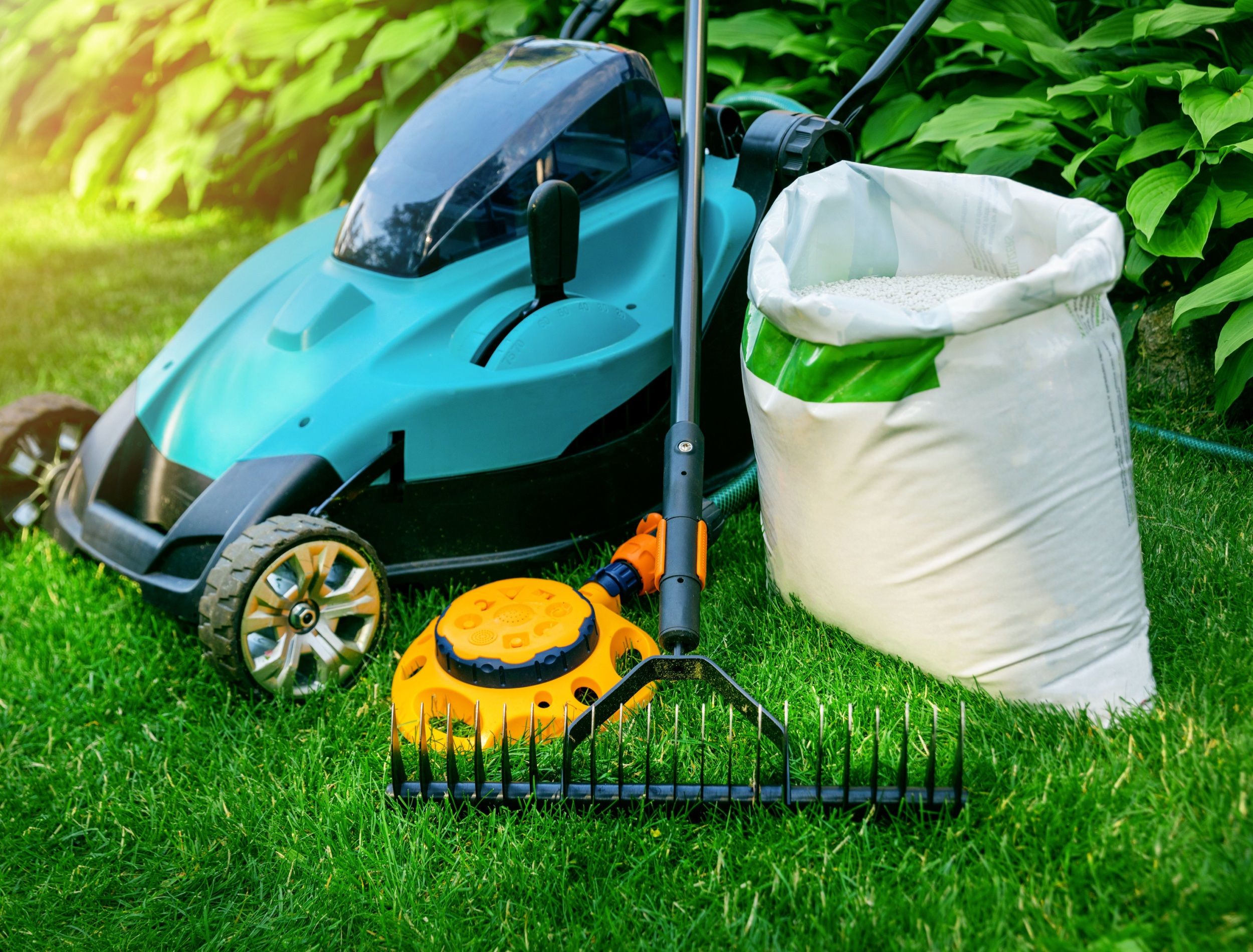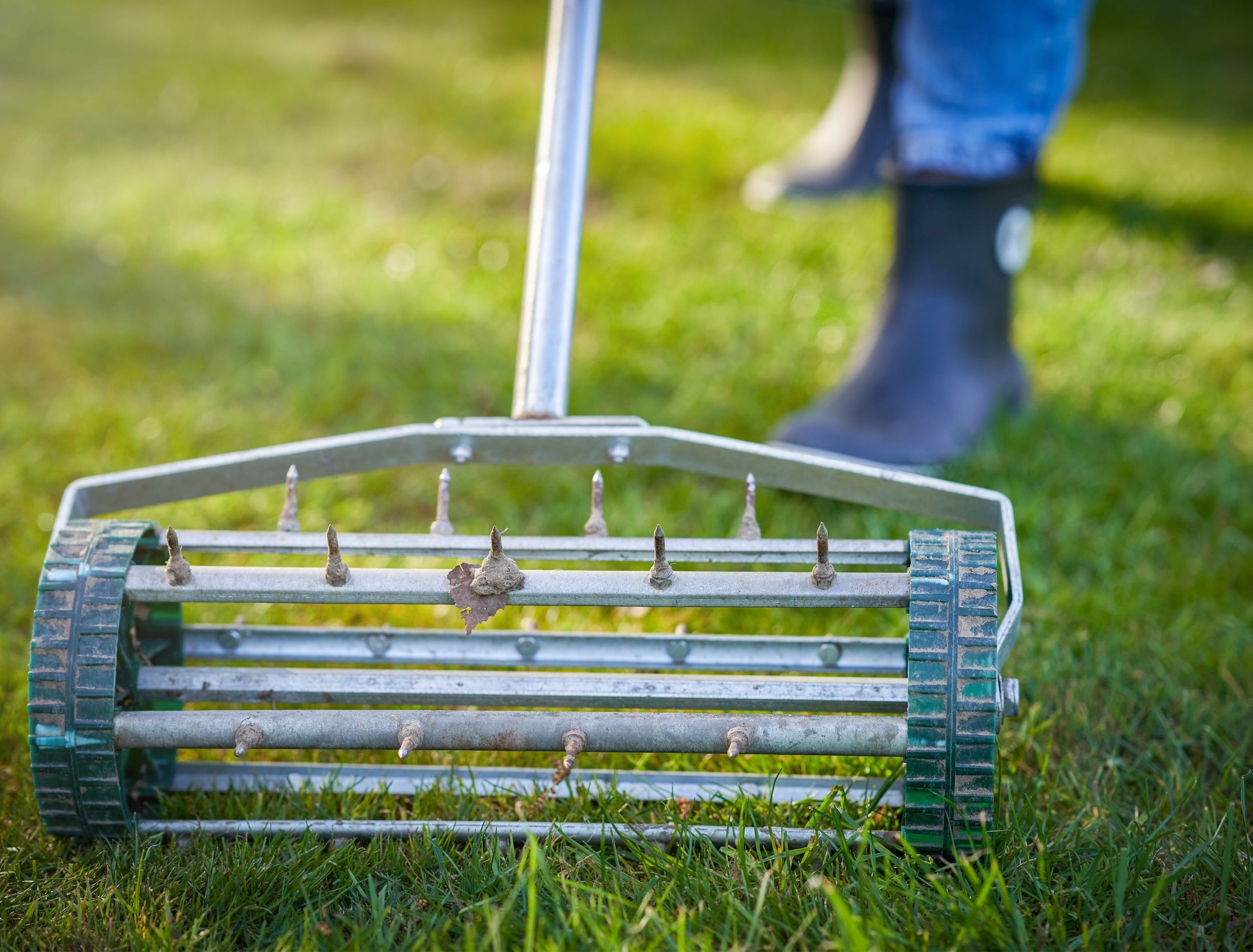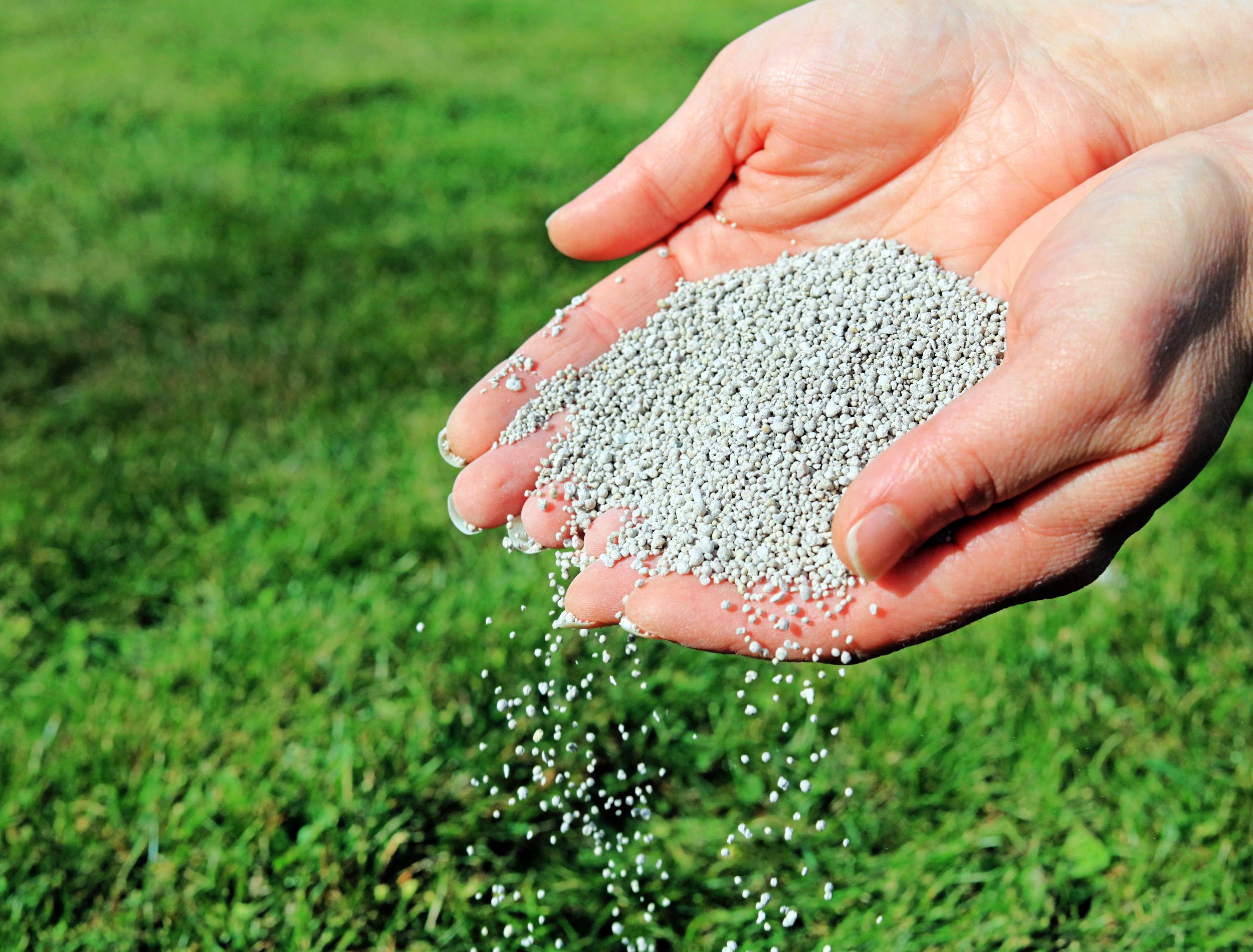A green and lush lawn is the pride of any gardener, and fertilizing is one of the essential practices that can help achieve this goal. However, if your lawn has compacted soil, it may not be able to absorb the nutrients from the fertilizer effectively. Now, lawn aeration comes into play! However, is it necessary to aerate your lawn before fertilizing?
Explore the benefits of lawn aeration and learn whether it's worth doing before fertilizing.
Should You Aerate Before Fertilizing?
Image credits: Kamil Macniak via Shutterstock
The short answer is yes, you should aerate before fertilizing! Aeration creates tiny holes in the soil, allowing air, water, and nutrients to penetrate the root zone and stimulate root growth. When fertilizing after aeration, the nutrients can more easily reach the root zone, where they're most needed.
Moreover, aeration creates a pathway for the roots to grow deeper, helping your grass access more nutrients and water to thrive. Following this sequence gives your lawn a boost, resulting in stronger, greener, and healthier grass.
Lawn Aeration
Image credits: Jeffoto via Canva
Benefits of Aerating
Aeration loosens compacted soil, allowing for better absorption, promoting deeper root growth, and aiding overall turf health.
It also reduces thatch buildup, which creates a natural barrier preventing nutrients and water from reaching the roots. By removing this layer of thatch, aeration improves the efficiency of fertilization and irrigation. Thatch is basically a clog in your lawn and aerating can help the issue!
Moreover, aerating your lawn can improve soil structure, creating a healthier ecosystem for beneficial microorganisms and earthworms. This helps break down organic matter and improves soil health. Finally, it lowers soil erosion and runoff, especially in areas with heavy rain or irrigation.
By incorporating aeration into your lawn care routine, you can enjoy a lush, healthy lawn that's better able to withstand environmental stresses. Not to mention it'll look great year-round.
How to Aerate Your Lawn
You can aerate your lawn using either a manual or a motorized aerator. First, mark any obstacles, such as sprinkler heads or rocks, to avoid damaging the equipment. Then, mow your lawn to a shorter length than usual (2 inches or less) to help the aerator penetrate the soil more effectively.
If you're using a manual aerator, run the tines/spikes into the soil and repeat the process over the entire lawn, overlapping each pass. When using a motorized aerator, follow the manufacturer's instructions to operate it safely and effectively.
It's best to aerate your lawn when the soil is moist but not too wet, as this will help the tines penetrate the soil more easily. The best time to aerate your lawn is in the spring or fall. However, pay attention to the type of grass you grow as this is the main factor in when you should aerate it.
Lawn Fertilization
Image credits: Dean Clarke via Shutterstock
Benefits of Fertilizing
Fertilizing provides essential nutrients your grass needs to grow, such as nitrogen, phosphorus, and potassium. These nutrients promote root growth, improve leaf development, and increase disease resistance.
Fertilizing balances the pH levels of your soil, ensuring that your grass can access nutrients more effectively. By fertilizing regularly, you prevent weed growth because a healthy lawn can better compete with weeds.
It also helps your grass recover from damage caused by pests, weather, or foot traffic. Finally, a well-fertilized lawn is more aesthetically pleasing, adding value to your property and providing a beautiful space for outdoor activities.
How to Fertilize Your Lawn
As established, before fertilizing your lawn, it's best to aerate it to ensure nutrients can penetrate the soil effectively. Once you've aerated your lawn, wait up to 48 hours to allow the soil to settle before fertilizing.
To fertilize your lawn, choose a high-quality fertilizer with the appropriate balance of nitrogen, phosphorus, and potassium. You can apply the fertilizer using a spreader, overlapping each pass to ensure even coverage. You can also use a homemade fertilizer to not extend your budget.
Fertilize your lawn during the growing season, typically from late spring to early fall, when your grass can make the best use of the nutrients. Water your lawn immediately after fertilizing to help the nutrients soak into the soil and reach the roots.
The Grass Is Always Greener on a Well-Tended Lawn
Aerating your lawn before fertilizing it provides numerous benefits, such as improving nutrient absorption, promoting root growth, and reducing soil compaction. By creating small holes in the soil, you can give your grass better access to water, air, and nutrients.
Aerate your lawn two days before fertilizing to ensure nutrients can penetrate the soil effectively. By incorporating aeration and fertilization into your lawn care routine, you can enjoy a beautiful, healthy lawn that looks and feels great all year round.
Do you aerate and fertilize your lawn? Share your experience in the comments!




